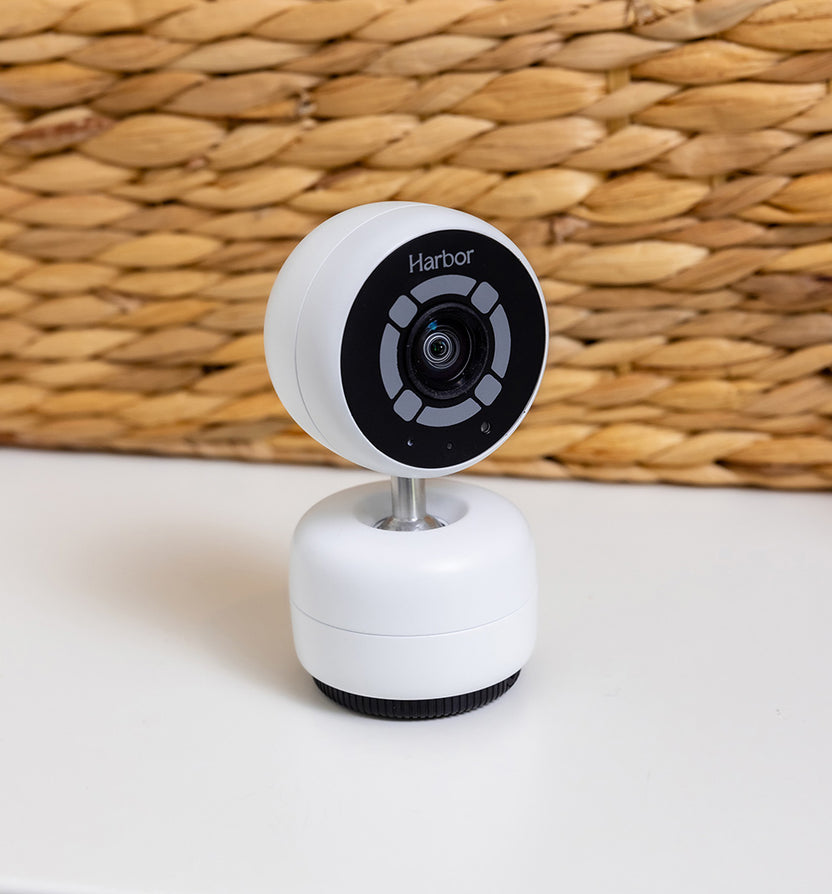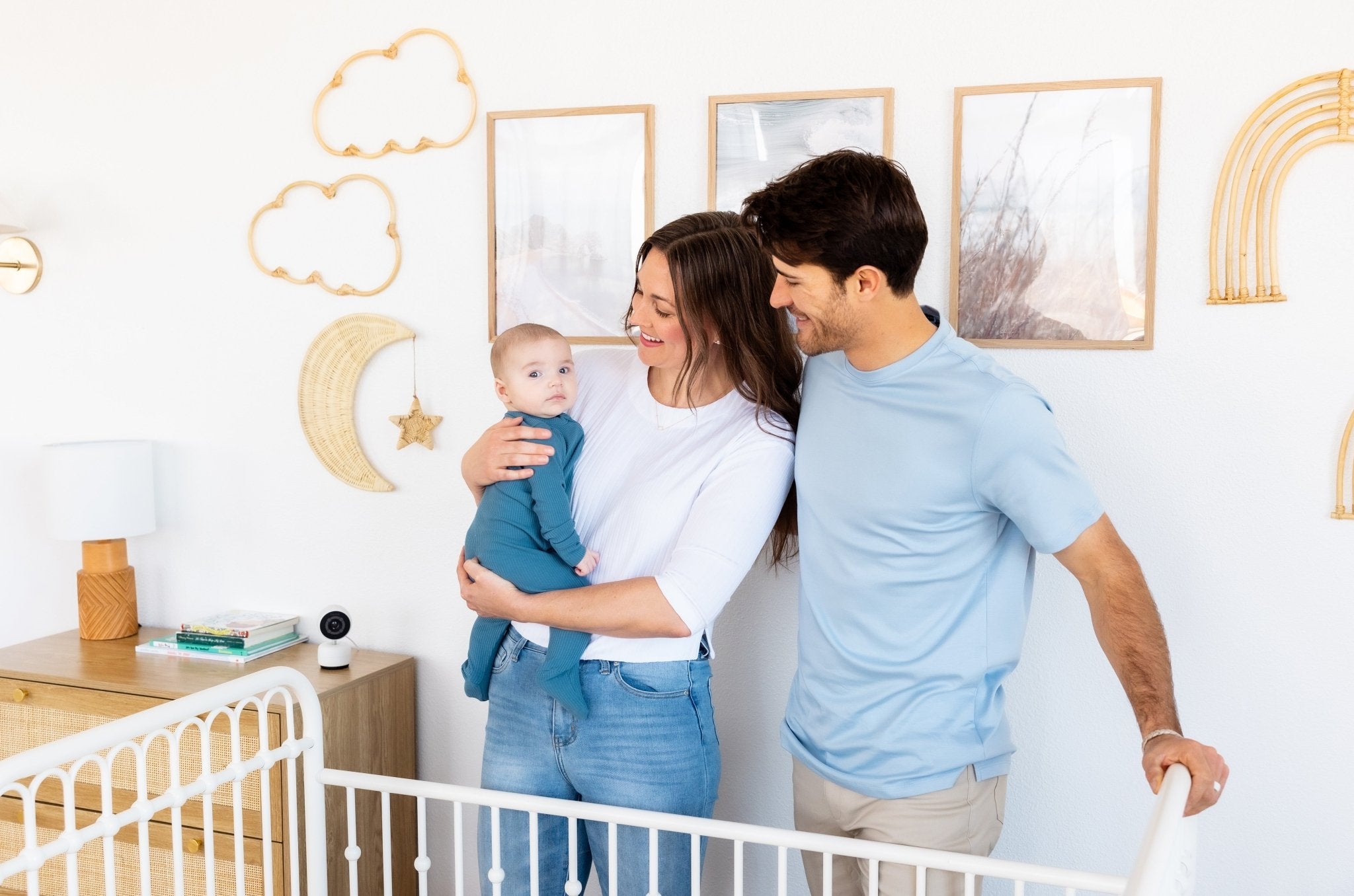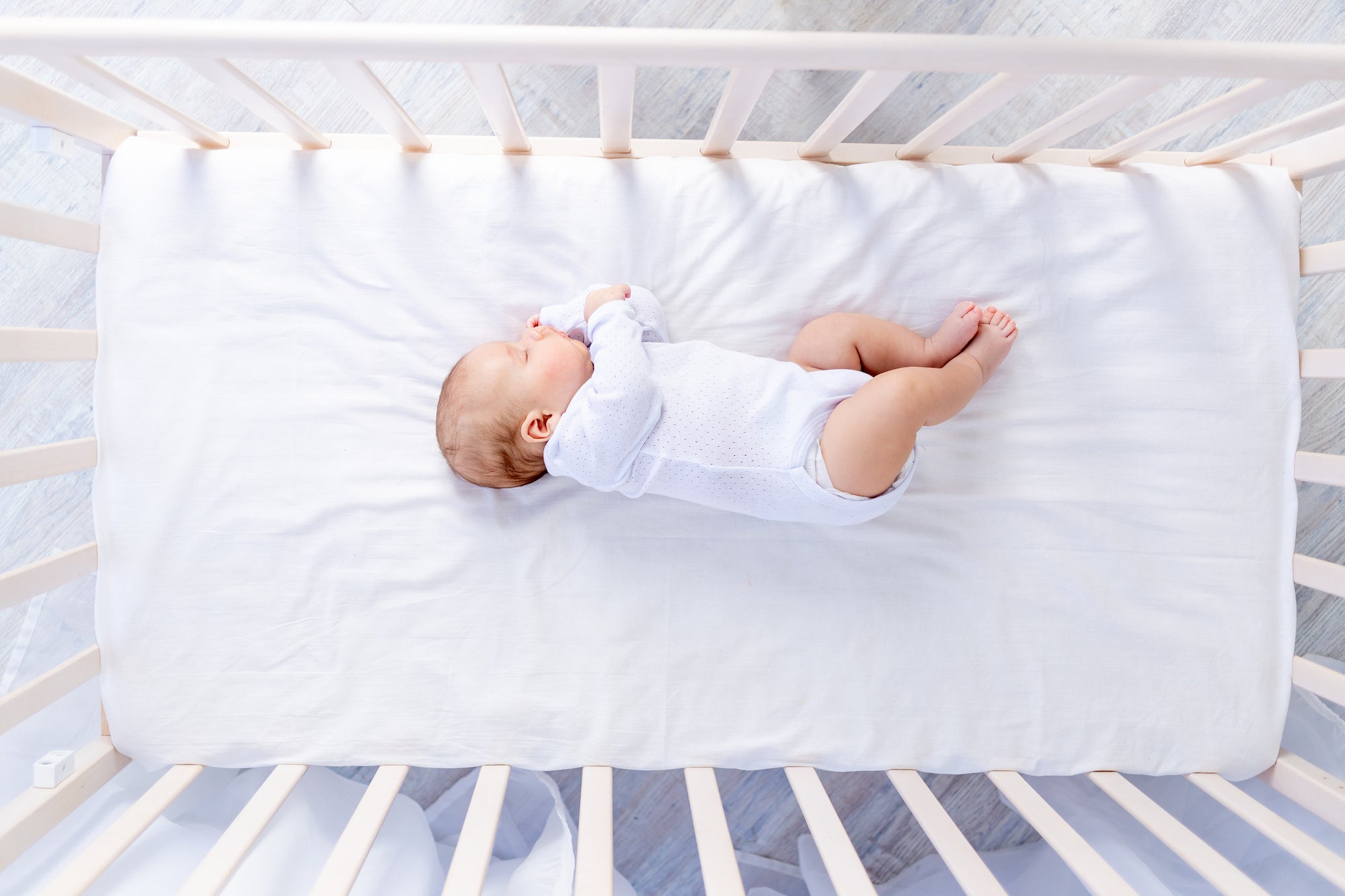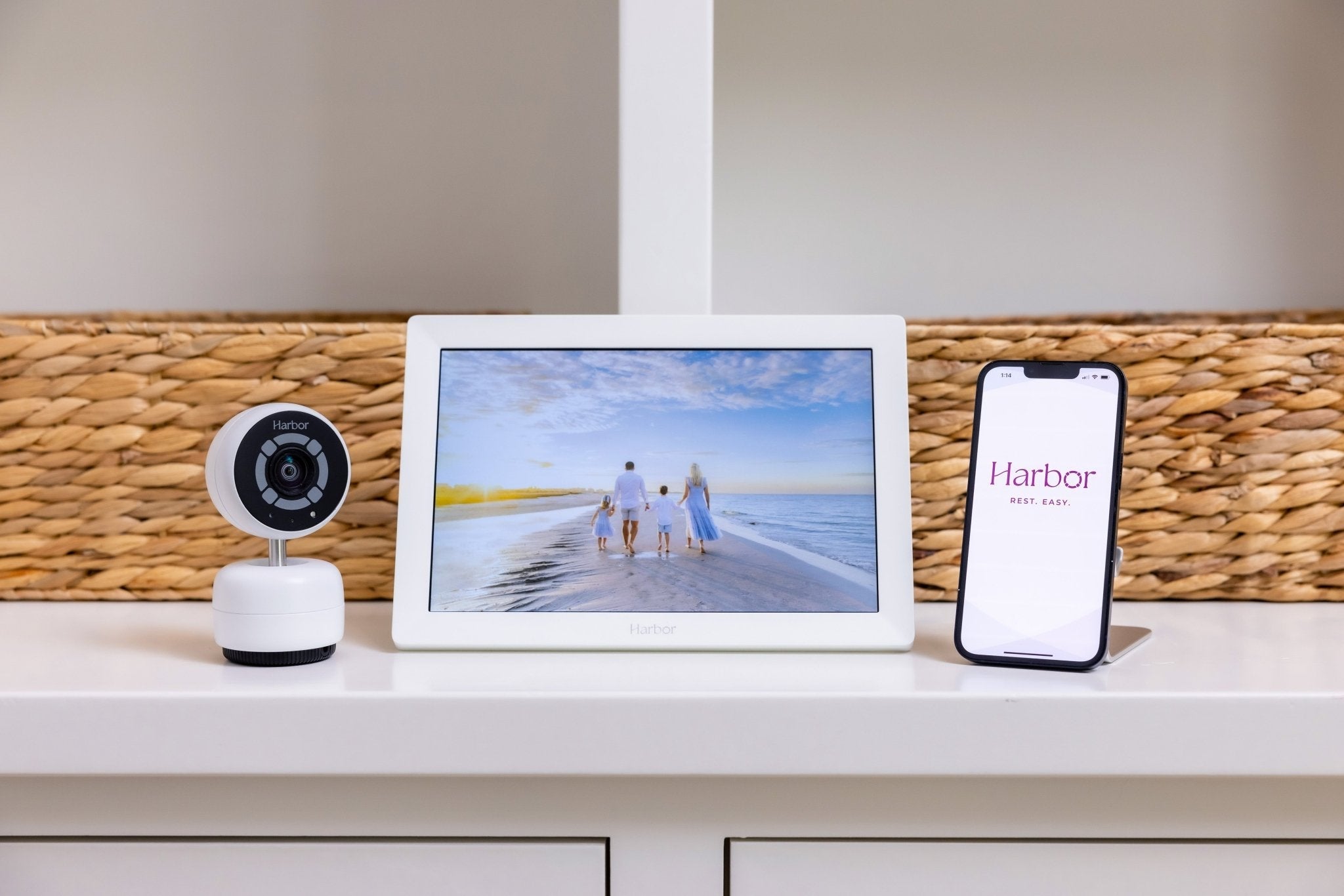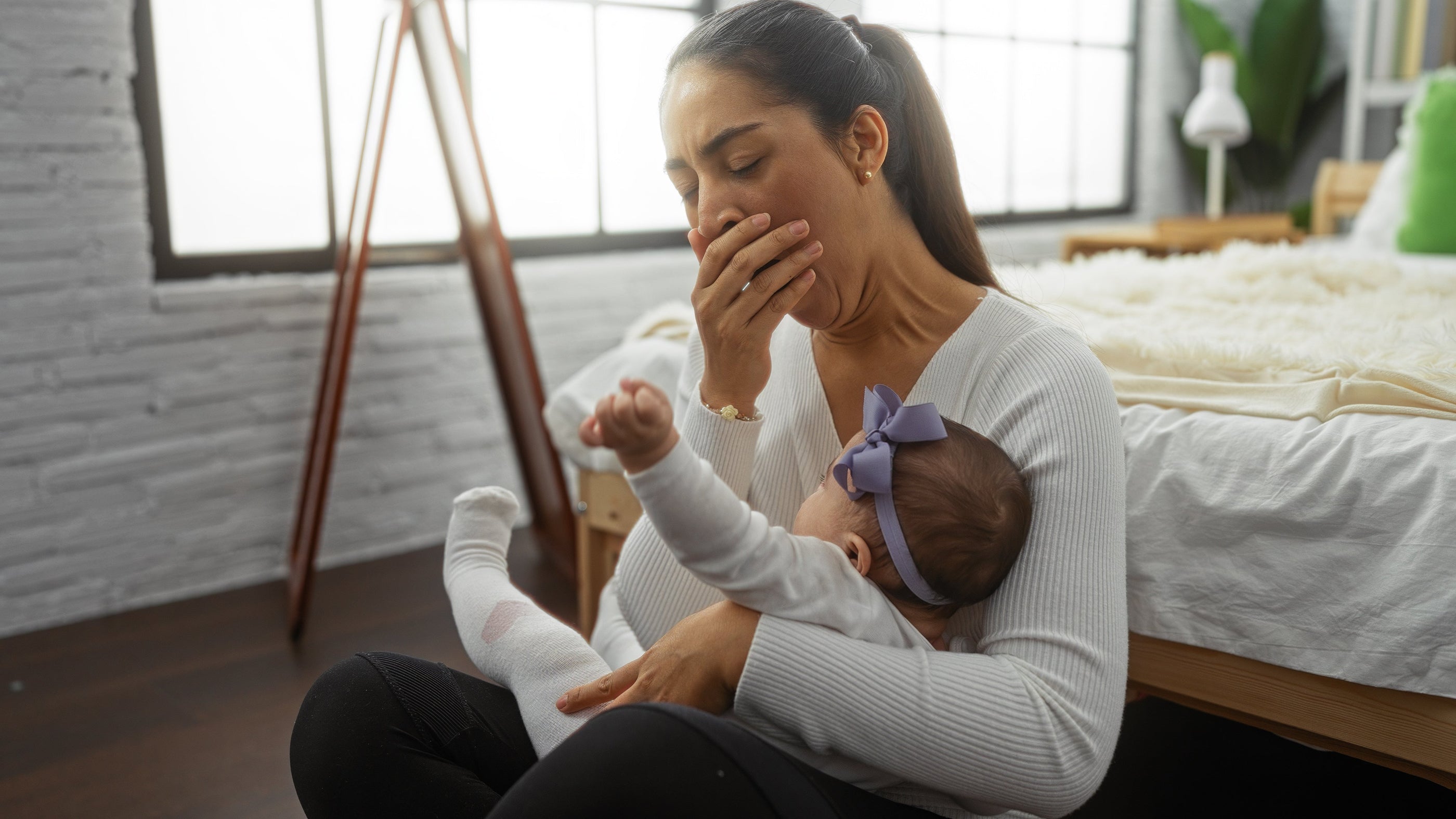
By Kelly Brown, RN, Pediatric Nurse & Mom
In the quiet hours of the night, when a baby stirs and a monitor blares an alert, parents jolt awake. Not because their child is in danger, but because a sensor said they might be.
We live in an era of “smart parenting.” From biometric socks to biometric sensor-connected apps, popular baby monitors promise peace of mind by tracking everything from oxygen saturation to sleep cycles. But as a pediatric nurse and a mom of three, I’ve seen firsthand that these devices often increase anxiety instead of easing it.
So I have to ask: Are baby sleep trackers actually helping families sleep better? Or are they contributing to a culture of fear, hypervigilance, and false reassurance?
The False Promise of "Safe" Baby Tracking
Infant biometric monitors are marketed with emotional urgency: “Know your baby’s oxygen levels,” “Monitor every heartbeat,” “Never miss a moment.” The branding is sleek. The tech is impressive. But the science? It’s lacking.
According to the New York Times, the American Academy of Pediatrics (AAP) and the Food and Drug Administration (FDA) have made it clear—no over-the-counter infant sleep monitor has been proven to reduce the risk of Sudden Infant Death Syndrome (SIDS).
These devices are often sold under the category of “wellness,” allowing them to sidestep stricter regulatory scrutiny. In fact, in 2021, the FDA issued a warning about unapproved claims made by companies like Owlet, cautioning against using these devices for medical monitoring at home.
So while they claim to make parenting “safer,” these trackers may be offering more illusion than assurance.
When Data Increases Anxiety
These trackers don’t just monitor, they notify. Loudly. Frequently. And often unnecessarily.
As a nurse, I know a quick drop in oxygen levels that self-corrects in seconds might be completely normal. However, most parents don’t have clinical training to interpret the data these devices generate. To a tired parent reading it out of context at 3 a.m.? It can trigger panic, Google spirals, or even unnecessary emergency visits.
Ask yourself:
-
Would I feel calmer with fewer notifications and more understanding?
-
Is tracking every nap and heartbeat helping—or increasing my stress?
-
What happens when I become more obsessed with the connected data than connection to my baby?
“We see it all the time—parents who aren’t sleeping because they’re staring at the app, waiting for the next alert. They’re exhausted not because their baby isn’t sleeping, but because the data has taken over the room.”
– Slumber Squad Sleep's Founder, Samantha Rosenberg
Parenting is not a performance to monitor, it’s a relationship to build. And when monitors interfere with that relationship, we need to reevaluate their role.
The Hospital Problem: Alarm Fatigue Comes Home
In hospitals, nurses and doctors are trained to manage constant alarms. But even they aren’t immune to “alarm fatigue”—a well-documented phenomenon where clinicians become desensitized due to too many false or low-priority alerts. The Joint Commission has flagged it as a serious patient safety issue source.
Now imagine that same fatigue, only it’s happening at home. In your nursery. At 2 a.m.
Parents are waking not to cries, but to apps, lights, and pings. They become conditioned to over-respond to benign variations, or worse, start tuning out alerts entirely. Either way, it creates stress and turns rest into surveillance.
What Actually Improves Baby Sleep (and Parent Sleep)?
Let’s be clear: families deserve tools that work. But the best baby sleep support doesn’t come from more data. It comes from evidence-based practices that are trusted by pediatricians, supported by research, and focused on well-being over perfection.
Here’s a comparison of common tools and what science actually supports:

The Hidden Mental Health Toll of Tracking
Sleep tracking can become a trigger, especially for new parents navigating the challenges of postpartum adjustment.
Up to 20% of mothers and 10% of partners experience Perinatal Mood and Anxiety Disorders (PMADs), according to Postpartum Support International. These aren’t “baby blues.” They’re serious and often misunderstood.
Common symptoms of PMADs include:
-
Sleep difficulty even when baby is sleeping
-
Intrusive thoughts or worst-case-scenario thinking
-
Panic, obsessive behaviors, or racing thoughts
-
Guilt, shame, or emotional numbness
-
Daily overwhelm, irritability, or anger
-
Withdrawal from partner or baby
Now imagine layering constant app notifications and anxiety-inducing graphs on top of that. Even parents not in crisis may find themselves hyperfocused on metrics at the expense of their own intuition.
If this sounds like you or someone you love, please reach out. PSI’s free helpline is available at 1-800-944-4773, or text “HELLO” to 800-944-4773.
What Parents Really Need: Clarity and Confidence
At Harbor, we believe peace of mind shouldn't come from panic-inducing alerts. It should come from evidence, support, and a calm, confident approach to parenting.
Last year, we launched Bye Bye Baby Biometrics—a campaign that shines a light on the harms of unregulated biometric trackers and fear-based marketing. It’s time to say goodbye to guilt and hello to tools that actually help.
Try This Instead:
-
Start with a safe sleep setup
-
Use a baby monitor without biometric wearables
-
Follow wake windows, not data graphs
-
Build a simple bedtime routine and stick with it
Takeaways: What to Do if You’re Feeling Burned Out by Sleep Tracking
-
Pause the data. Take a break from apps and see how you feel.
-
Focus on connection. Watch your baby, not your screen.
-
Ask for help. From a friend, a partner, a sleep coach, or a therapist.
-
Choose tools that support your values, not undermine them.
The goal isn’t perfect sleep data. The goal is rest for the whole family—without fear, judgment, or 24/7 analysis.
You Don’t Need a Graph to Know You’re a Good Parent
Let’s redefine peace of mind. Let’s center parent sleep, emotional well-being, and developmentally appropriate routines—not false alarms.
Because the best parenting tool isn’t digital. It’s you—rested, supported, and confident.
More from Harbor’s Blog
External Resources
Chart Citations
- American Academy of Pediatrics. (2016). Do not use home cardiorespiratory monitors as a strategy to reduce the risk of SIDS. Choosing Wisely Campaign. https://www.aap.org
- Moon, R. Y., & Task Force on Sudden Infant Death Syndrome. (2016). SIDS and other sleep-related infant deaths: Updated 2016 recommendations for a safe infant sleeping environment. Pediatrics, 138(5), e20162938. https://doi.org/10.1542/peds.2016-2938
- Mindell, J. A., Telofski, L. S., Wiegand, B., & Kurtz, E. S. (2009). A nightly bedtime routine: Impact on sleep in young children and maternal mood. Sleep, 32(5), 599–606. https://doi.org/10.1093/sleep/32.5.599
- Mindell, J. A., Kuhn, B., Lewin, D. S., Meltzer, L. J., & Sadeh, A. (2006). Behavioral treatment of bedtime problems and night wakings in infants and young children. Sleep, 29(10), 1263–1276. https://doi.org/10.1093/sleep/29.10.1263
- Sadeh, A., Flint-Ofir, E., Tirosh, T., & Tikotzky, L. (2007). Infant sleep and parental sleep-related cognitions. Journal of Family Psychology, 21(1), 74–87. https://doi.org/10.1037/0893-3200.21.1.74
- American Academy of Pediatrics. (2016). Swaddling: Is it safe? HealthyChildren.org. https://www.healthychildren.org
- Hauck, F. R., Omojokun, O. O., & Siadaty, M. S. (2005). Do pacifiers reduce the risk of sudden infant death syndrome? A meta-analysis. Pediatrics, 116(5), e716–e723. https://doi.org/10.1542/peds.2004-2631
